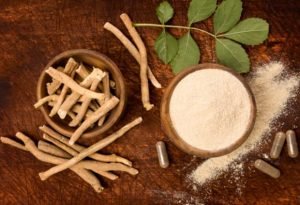
by admin | Jun 5, 2022 | Life, Health
3 POWERFUL LIFESTYLE STEPS TO CREATE A MORE FULFILLING LIFE IN 2022
At first, improving your lifestyle can seem to be an unattainable goal. By this, I mean the quality of your life experience from the type of food you eat, the kind of folks you hang with, the sort of people you date, finances and vacations, and so on.
Full disclosure, it’s unlikely that you’ll be able to change anything in your life at once. However, it’s entirely possible and there are several little improvements you can make to enhance your physical, social, and mental well-being which will help you appreciate your life more.
That said; begin making one or two minor improvements at a time. You’ll be living the life you’ve always wanted in a given duration of time. This shall be dependent on your effort, your educational resources, and commitment.
Here are 3 powerful lifestyle tips to help you create a more fulfilling life.
1. Work on Your Physical Well Being

First, it all boils down to your diet. It’s not so difficult to eat a balanced diet. Include a range of fruits, vegetables, whole grains, low-fat dairy products, and lean proteins such as legumes, fish, and chicken, and don’t forget the healthy fats in your diet.
Next, incorporate at least 150 minutes of mild to vigorous aerobic exercises such as taking a walk or intensive aerobic exercise like dancing into your routine. You can also do high-intensity resistance training regularly to tone the prominence of your muscles. Yes, I mean the six-pack or a perfect bottom.
Finally, come up with a healthy nighttime routine. Sleep deprivation will only increase exhaustion making you unproductive hence limiting you from experiencing positive feelings and achieving your goals.
2. Improve your Mental Wellness

Pay attention to the things that cause you tension and stress. You could be able to avoid these cues by avoiding people that cause it or not overcommitting yourself in certain situations.
Next, ditch the past. Seriously. It happened, so get comfortable with the decisions you made, and start living mindfully as you focus on the future. Practices such as meditation and counseling would be a great place to start.
Last but not least, set realistic and achievable goals for yourself. You’ll always be inspired and focused on the bigger picture.
3. Social and Professional Improvement

Ultimately, start the routine of saving cash. Regularly track your expenses and as you save more, ensure you invest this cash to yield more returns. Furthermore, it’s vital to keep improving your relationships. If you’ve got a romantic partner, put effort into keeping the relationship healthy, as it can be beneficial to your physical and emotional well-being.
Needless to say, read more up-to-date content, pursue interesting hobbies and hang out with interesting folks who are healthy.
Bottom Line
These steps build onto one another. That said, you can work your way through step one to step 3 instead of getting overwhelmed while juggling between them all. You will gain momentum along the way, and when tough times come, brace yourself as that’s where you grow wiser and stronger. At the end of the first two weeks, I guarantee you will see a positive change in your life.

by admin | Jun 5, 2022 | Health, General
Let’s talk Antioxidants Part 1
According to medical professionals, antioxidants are one of the best supplements to help the body combat the damaging effects of free radicals. The antioxidant content in most fresh fruit and vegetables varies, but rainforest fruits are often more beneficial than those from other regions. For example, acai berries are loaded with antioxidants, which makes them appropriate for use as a superfood.
A prefix like ‘anti’ is used in opposition to something, or in a way that helps to correct it. Chemicals called antioxidants work against oxidants that damage cells It is believed that oxidants play an important role in numerous bodily processes, and that this is why they are found in the body. As a result of billions of biochemical reactions that occur within the body every minute, they are produced.
These harmful by-products are produced when the very oxygen that provides oxygen to the body actually damages its cells, damaging their DNA, fats and proteins. The body is also exposed to free radicals as a result of external influences such as exposure to the sun, pesticides and other kinds of pollutants. Stress, unhealthy foods, and cigarette smoking also increase these hormones’ levels.
A breakdown of body cells is caused by oxidation inside the body, much like rust on cars. When free radical oxidation in the body rises to an unhealthy level, cellular components may be altered, and ageing may be accelerated. Moreover, it may cause a variety of degenerative illnesses, as well as reduce the body’s ability to deal with other ailments, such as cardiovascular dysfunction, eyesight problems, and cancer.

The body may also be less able to heal wounds and defeat infections due to a compromised immune system, resulting in immunological disorders. A few studies point to possible links to arthritis and other chronic conditions. Free radicals are destroyed by antioxidants by binding to them before they cause damage. By converting these compounds into non-damaging biochemical substances, they are able to help repair cell damage to a great degree.
The human body produces antioxidant enzymes. Catalase, superoxide dismutase, and glutathione are the most well-known of them: Hydrogen peroxide is converted into oxygen and water by catalase. Antioxidants are broken down into hydrogen peroxide by superoxide dismutase.
Glutathione works as a detoxifier, transforming toxins into a form that is easier to eliminate. The diet can provide additional antioxidants. In addition to beta-carotene and vitamin B6, some other antioxidant vitamins are Vitamin C and Vitamin E. Minerals like selenium, zinc, glutathione, and coenzyme Q10 may also be antioxidants, and so may flavonoids such as cranberries, some amino acids, plus organic extracts from milk thistle and ginkgo biloba.
These antioxidants are found in a large supply in fruits and vegetables, which helps eliminate free radicals. Vegetables and fruits that contain high levels of polyphenols include carrots, orange and red peppers, and spinach. Raw vegetables and fruit, and sprouts can help the body absorb antioxidants, since cooking destroys some of them. It is also a good idea to steam vegetables rather than fry, microwave or boil them.
Because pure antioxidants, such as vitamin E, require additional vitamins in order to work effectively as antioxidants, they should be consumed in combination. The best sources of antioxidants may therefore be found in foods or supplements. Some of the best natural antioxidants are found in rain forests of the world. Health experts praise acai berries for the high number and wide variety of antioxidants they contain, making them a great source of antioxidants. This is why the acai berry has been called one of the top ten superfoods in the world.
So get out and stock up on these amazing anti-ageing foods and supplements and load up on your antioxidants. To see how you can get more into your daily diet and routine check out our next article.
Disclaimer
Article for entertainment and information purposes only. Always seek a medical opinion before trying any new supplements or nutrition routine and never stop taking medication without speaking to your medical provider.

by admin | Jun 5, 2022 | Fitness, Workouts
Legs & Abs Exercises You Aren’t Doing That You Should Do
If you are like most people, you probably think you are doing all the exercises that you should be. However, there are probably a few exercises that you are neglecting that can provide some major benefits. In this blog post, we will outline four exercises that you may not be doing, but should definitely add to your routine. Keep reading to learn more!
#1 Front Squats

Many people do back squats, where the barbell is placed on the top of the traps, but not that many people do front squats. Front squats are one of the most effective lower-body exercises because they place a slightly different emphasis as opposed to back squats. This is because the barbell is placed on your shoulders, rather than on your back. Additionally, front squats can help you keep your spine safe and bring up your glutes if they are lacking.
#2 Romanian Deadlifts
Romanian deadlifts are one of the best exercises for the hamstrings and glutes. This type of deadlift is a compound exercise that involves both the lower and upper body, making it an extremely effective way to train the entire body. But really, as we just said, where this exercise shines, is its ability to target the glutes and hamstrings! Usually, deadlifts are done on the days when you train back, but with this variation, you can include it on your lower body training days!
#3 Hanging Leg Raises
Hanging leg raises are one of the most effective exercises for the abs. This is because they work the entire abdominal area, including the lower abs, which are often difficult to target. To do a leg raise, you can in fact start with a knee raise! Hang on a pull-up bar and lift your knees up to your chest, contracting the abs.
Once you get used to this movement and controlling the swinging of your body, move on to a leg raise, where you flex your ankle, keep the legs straight at the knee and bring them up. Here’s a cue: Try touching the ceiling with your toes!
#4 Stomach Vacuums

Speaking of effective ab movements, we can’t skip the stomach vacuums! The stomach vacuum exercise is a bodybuilding move that originates from the golden era of the sport. It was first made popular by bodybuilder and fitness icon Frank Zane, and has been used by top-level athletes and bodybuilders for decades. The exercise is simple but extremely effective, and can help you achieve a tight, toned midsection. And doing it is quite simple:
- Put your hands on your knees
- Exhale fully, while flexing your abs
- Keep the abs flexed
- Tuck your abdominal wall under your ribcage
- Hold briefly!
Conclusion
If you’re looking to change up your leg and abdominal routine, give some of these exercises a try.You may find that you enjoy them more than the standard exercises you usually do, and they could help you achieve better results. And if you don’t like any of these suggestions, there are plenty of other exercises out there that can help strengthen your legs and abs. Stay tuned on our website!

by admin | Jun 5, 2022 | Health, Mind
Is Depression An Inflammatory Disorder?
Just a decade ago, the thought that inflammatory mechanisms might lead to the emergence of MDD (major depressive disorder) was so ground-breaking that it could endorse reviews. However, a Medline search turned up thirty-seven review articles that explicitly showed the links between immune-inflammatory variables and depression, or the therapy of depression.
Another study connecting inflammation to depression is scarcely necessary against such a growing backdrop. Instead, we believe it is worthwhile to address the connection between depression and inflammation in this article.
Is Depression an Inflammatory Disorder?

Fully understanding the immunological foundation of diseases has fundamentally changed the treatment of inflammatory disorders. Immunologic mechanisms could now be involved in the maintenance and development of mental disorders, establishing a whole new pathway for unique psychiatric disease prevention and treatment strategies.
The immune mechanisms associated with depression have garnered the most interest. A large body of evidence supports the idea that the immune system, in general, and inflammation, in particular, are pathways to disease in a large percentage of depressed individuals. Even though the link between depression and inflammation may appear clear at first sight, it is considerably more complex and complicated than many people assume. But one thing remains clear;
Depression is not an inflammatory disorder
One of the most significant things that were discovered about depression and inflammation is that depression is not an inflammatory illness, and not every individual experiencing depression has elevated inflammation. Yes, numerous studies have shown increased average concentrations of markers of inflammation in despondent persons when compared to control studies.
Acute inflammation is seen in a variety of mental illnesses, such as anxiety disorders, bipolar disorders, personality disorders, and schizophrenia, and personality disorders among others. These findings imply that inflammatory processes are transdiagnostic, appearing in subgroups of people suffering from a variety of mental illnesses.
The Link Between Depression and inflammation
An inflammatory reaction that lasts too long may cause chaos in our systems and leave us at risk for mental health problems and other diseases.
Inflammation markers, for instance, are higher in individuals with depression than in individuals who are not depressed. Inflammatory markers can also reflect the degree of depression symptoms. A twin with a greater CRP level (a marker of inflammation) is more prone to depression half a decade later, according to research that investigated twins who had 100 percent of the same set of genes.
Doctors found that Hepatitis C and cancer patients receiving IFN-alpha treatment (which boosts the immune system) were also depressed. This therapy caused a surge in the production of pro-inflammatory cytokines, a condition that resulted in appetite loss, sleep disturbances, anhedonia, suicidal ideation, and cognitive impairment. These findings support the inflammatory theory of depression.
Following extensive research, it was shown that the increased frequency of depressive symptoms among patients administered FN-alpha was not solely due to their illness. Investigators used a simple way of dosing healthy participants with immune system intruders and discovered that those administered had greater rates of depression symptoms than those who got a placebo. Anhedonia, negative mood, sleep problems, social isolation, and cognitive problems were reported by the participants who were stimulated to get an inflammatory reaction.
Treating Depressive Episodes as a Systemic Disease

What would depression signify in terms of therapy if seen as part of systemic disease? Aside from the apparent link to pharmaceutical therapies like antidepressants, it implies that adjustments to the body’s processes may also assist to reduce depression. While mind-body therapies are essential, those that address physical systems may be even more so.
Therapies that target physical variables like sleep, nutrition, and exercise, for instance, might be a beneficial supplement to medical and psychological treatments.
Even in this case, thinking outside the box is necessary.

by admin | Jun 5, 2022 | Life
Improving Your Quality of Life
“It is our decisions, not our conditions that determine our quality of life”, says John C Maxwell. Quality of life can be hard to define because its definition can vary by people’s lifestyle and their preferences in life. For some people it might be, becoming CEO of a well-known company, for others, it might be just fulfilling their wanderlust in the Amazon Forest.
Either way, quality of life is a subjective and intangible term that is the outcome of one’s decisions and wishful choices. People who were born in rough conditions are not at fault but if their deathbed is laid under the same roof then it is their choice of living. As Jack Canfield once said, “There is only one person responsible for the quality of life you live and that person is you.” Therefore, one can certainly improve their quality of life by making the right decisions whether it be financial or social.
Improving Your Quality of Life

Improving the quality of life is not a hard nut to crack and there are certain aspects to pay more attention to and certain things to do that may help you increase your overall life quality.
Let’s have a look at some of them.
Be Grateful for What You Have
It’s human nature to envy what others have and we lack – whether it be good grades, lifelong friendships, flourishing careers, flaunting pay, or a loving soulmate. We sometimes drain our entire energy over such a lost cause while instead, we should be spending that energy in celebrating what we have. Being grateful for little things in life can help us to live a happier and contented life.
Maintain Healthy Relationships

The most important factor required to have a better quality of life is to maintain healthy relationships whether it be with your life partner, friends, or parents and siblings. Research has indicated a high correlation of increased happiness, life satisfaction, psychological well-being, and reduced suicide risk with having a healthy relationship.
Abusive relationships and toxic friendships can reduce one’s intention to live further and may lead to depression and hopelessness. Therefore, try to maintain healthy relationships and let go of the toxic ones.
Find Meaning in Your Work
Is pay the most relevant factor for opting a job opportunity? Many people subconsciously agree to this notion because they link higher pay to being able to afford a better standard of living.
But a better standard of living is no way near to having a better quality of life. Being part of a working environment that is meaningless and directionless can lead to harmful consequences, it can emotionally and physically drain one person and reduce the quality of life to an alarming point.
Hence, choose a job that might not pay well but might help you to stay well.
ME Time
The age of 22-30, where we feel so much pressurized by the expectations that society holds for us. Getting degrees with distinctions, getting well-paying jobs, getting great life partners, having healthy children and what not! So much to achieve in such a short span that we actually forget to take our time for ourselves.
Research has proved that people who take their free time for themselves tend to have lesser stresses, improved moods, and have enhanced problem-solving skills. Therefore, always try to have little Me time before going to bed.
Be Optimistic
Optimism refers to being able to always find the positive side of most unpleasant situations. That seems impossible for extreme situations such as departing a loved one but this is an actual test of life to get yourself out of adversity by being optimistic.
In the pursuit of getting a better quality of life one must hop on the bandwagon of optimism and envision the best possible outcome.
Stay Healthy

The three rituals of staying healthy include a good night’s sleep, a healthy balanced diet, and exercise. All three drivers are extremely crucial to keep your life moving on the path of getting the best quality of life. Missing on any one of them can cause detrimental effects on your health and can spare you from enjoying the moments of life.























